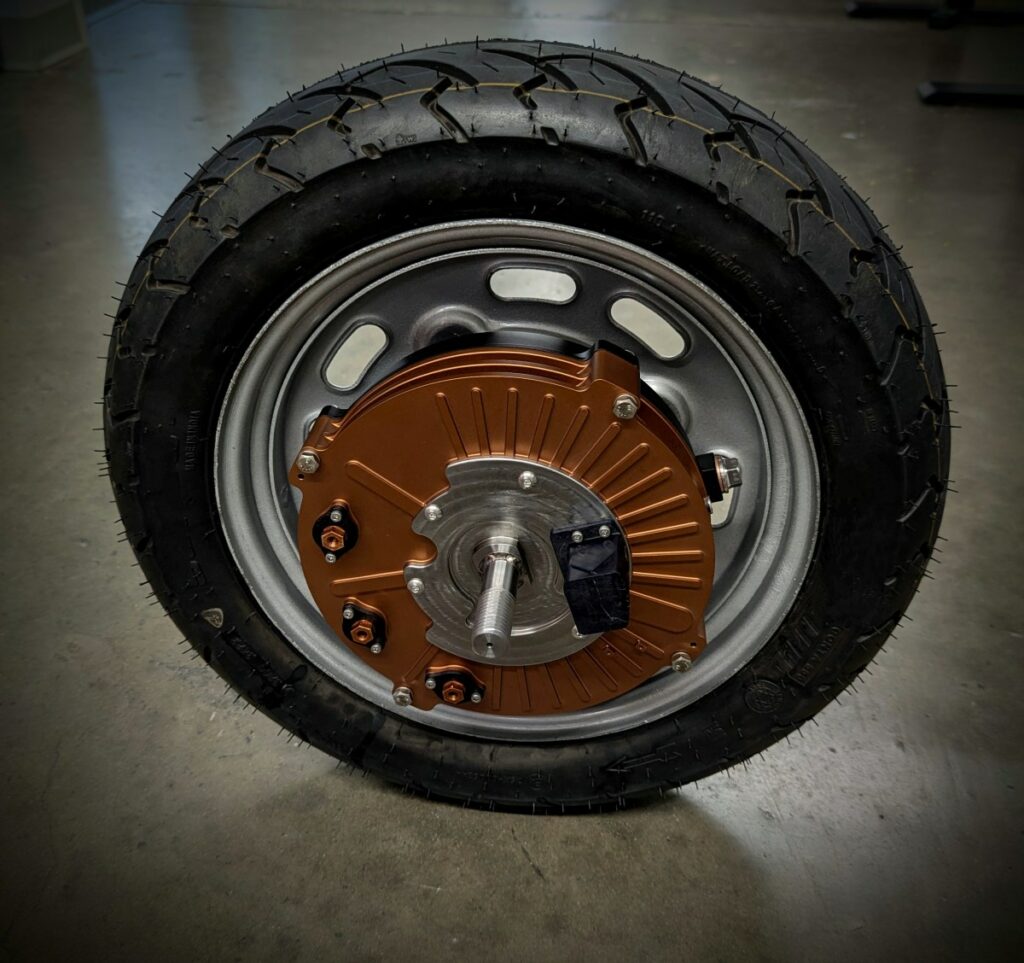A handful of engineers who worked at Lucid Motors and on Apple’s electric car project have launched a new startup that puts a fresh spin on electric hub motors.
The new startup, called Conifer, has developed its motor to be free of rare earth elements by using more abundant ferrite magnets, which the company says not only reduces cost but limits supply chain risk. Conifer also says its proprietary stator offers higher efficiency and power than comparable options while being half the size.
The company’s timing — a new volatile era of tariffs and a trade war with China — is auspicious. And its tech has attracted some serious financial attention. The motor, and Conifer’s approach to building it, helped it build out a $20 million seed round from a host of deep tech investors, including True Ventures, MaC Ventures, MFV Partners, and others. True Ventures’ Rohit Sharma has joined Conifer’s board.
Conifer arrives on the scene as progress in electric motor development seems to be advancing rapidly. Companies like Germany’s DeepDrive and Finland’s Donut Lab are taking novel approaches to making electric motors more efficient, powerful, and affordable. This all comes at a time when batteries — which typically account for a bulk of the cost in an electric vehicle — are still getting cheaper, but are not seeing the dramatic price decreases that were evident a decade ago.
Conifer’s initially targeting the small mobility space with its hub motor, which it touts as “drop-in,” meaning customers can replace existing hub motors without any major design changes. It’s going after on- and off-road vehicles with two, three, or four wheels.
The company says it has also found interest from lawnmower and tractor makers, and even HVAC companies. It already has a handful of global customers and plans to start shipping production motors later this year.
Ankit Somani, one of Conifer’s co-founders, told TechCrunch in an interview that he was frustrated by the lack of investment and innovation in electric motors. While he doesn’t have the same background of working at electric vehicle companies as many of his colleagues, he said he’s followed the space closely as an EV enthusiast.
“There was a lot of investment and the battery technology segment, all the way from cathodes, anodes, electrolytes — every piece of it. But not enough on the powertrain front,” Somani said. “So we saw that as a opportunity from a market standpoint that, hey, there’s not enough people who have thought enough about this from ground up.”

That approach led to Conifer’s novel motor design and its manufacturing strategy. By using magnets that are more common, Conifer aims to localize its supply chain around its manufacturing facilities. It also wants to highly automate the manufacturing lines and make them adaptable, so different size motors can be built on the same line.
This highly automated, localized “microfactory” idea has been bandied about a lot by companies like Arrival, which went out of business before it could ever really put it to the test.
Somani said Conifer’s motors are “one to two orders of magnitude” less complex than a car, which should reduce the risk of this approach. And he said the company will deliberately introduce automation to the manufacturing of certain subsystems, like the stator, instead of trying to automate everything from the start.
“That’s the thesis we are moving forward with,” he said. “We’ll start with one country where we’ll make this happen, and then we can take it in different places, depending on how local demands get.”
When it comes to selling the motors, though, Somani said he’s found success in setting aside a lot of these specifics about what Conifer is up to. The company is, after all, a startup. And larger, more established companies don’t like the risk that startups present, he said.
So instead, he comes back to the drop-in nature of Conifer’s motor.
“You had a wheel before, which had a hub motor, now you get a new wheel, and just with the drop-in replacement, you get 10% range improvement. That’s it. And so all the cost and all the other conversations come afterwards,” he said.


